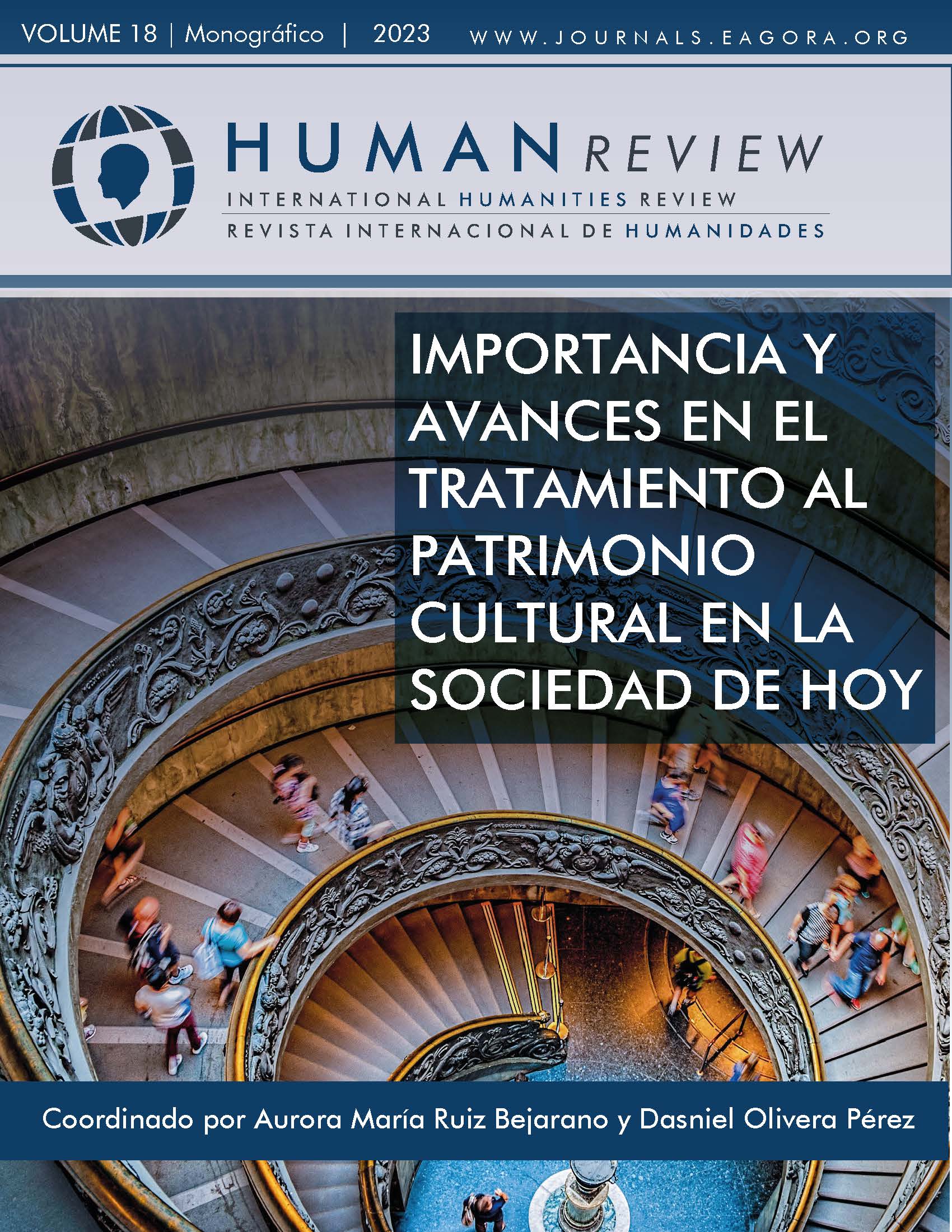Expolio y destrucción en Oriente Próximo en el contexto de guerra e inestabilidad política
DOI:
https://doi.org/10.37467/revhuman.v18.4864Palabras clave:
Expolio, Oriente Próximo, Guerra, Patrimonio cultural, Daesh, EIIL, Tráfico de antigüedadesResumen
Since the Arab Spring of 2011, the cultural heritage of the Middle East has faced a serious threat, as Daesh (ISIS) and other extremist organizations turned archaeological sites into a financing tool. In 2016, around 100,000 cultural objects of great importance, including 4,500 archaeological sites, nine of which are included in the UNESCO World Heritage List, were under the control of the Islamic State in Syria and Iraq. However, not only these extremist groups are included in these dynamics. Part of the population of these countries does not hesitate to carry out this type of activity to get ahead.
Citas
AAAS. (2014). Informe anual. www.aaas.org/sites/default/files/AAAS_2014%20Annual%20Report.pdf
Ali, Ch. (2013). Syrian Heritage under Threat, Jemahs, 1(4), 351-366. www.jstor.org/stable/10.5325/jeasmedarcherstu.1.4.0351
Brown, M. (2021). British Museum helps return 2.000-year-old looted statue to Libya. The Guardian. www.theguardian.com/culture/2021/may/10/british-museum-helps-return-2000-year-old-looted-statue-to-libya
Bogdanos, M. (2005). The Casualities of War: The Truth about Iraq Museum. American journal of Archaeology, 109(3), 477-526.
Casana, J. (2015). Satellite imagery-based anaysis of archaeological looting in Syria. Near East. Archeol, 78, 142-152.
Casana, J, & Panahipour, M. (2014). Notes on a Disappearing Past: Satellite-Based monitoring of looting and damage to Archaeological Sites in Syria, Journal of Eastern Mediterranean Archaeology and Heritage Studies, 2(2), 129-151.
Howard, R. (2015). Diggin In and Trafficking Out: How the Destruction of Cultural Heritege Funds Terrorism. CTC SENTINEL, 8, 14-18.
Lizaranzu, M. T. (2016). El papel de la UNESCO en la protección del patrimonio en zonas de conflicto. Tribuna abierta. www.uria.com/documentos/publicaciones/4960/documento/tribuna.pdf?id=6209
Loosley, E. (2015). Looting and archaeological Destruction in Syria. Academia.edu. www.academia.edu/31460342/Looting_and_Archaeological_Destruction_in_Syria
VV. AA. (2017). Written testimony of ICE Homeland Security Investigations International Operations Assistant Director Raymond Villanueva for a House Committee on Financial Services, Subcommittee on Terrorism and Illicit Finance hearing titled “The Exploitation of Cultural Property: Examining Illicit Activity in the Antiquities and Art Trade”. Homeland Security. www.dhs.gov/news/2017/06/23/written-testimony-ice-house-financial-services-subcommittee-terrorism-and-illicit
Descargas
Publicado
Cómo citar
Número
Sección
Licencia
Aquellos autores/as que publiquen con esta revista, aceptan los términos siguientes:
- Los autores/as conservarán los derechos morales sobre la obra y cederán a la revista los derechos comerciales.
- Transcurrido 1 año desde su publicación, la versión del editor pasará a estar en acceso abierto en la web de la editorial, pero la revista mantendrá el copyright de la obra.
- En el caso de que los autores deseen asignar una licencia abierta Creative Commons (CC), podrán solicitarla escribiendo a publishing@eagora.org.








